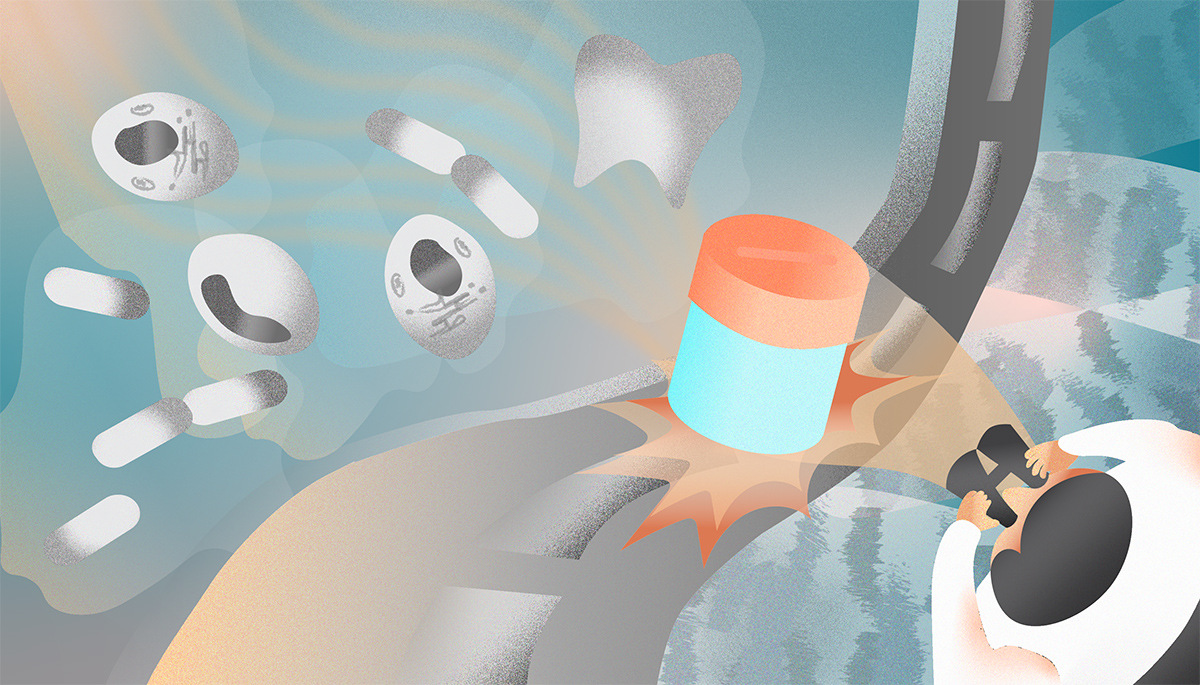- Home >
- Learning centre >
- Science blog >
- A completely new way to see your biological sample
A completely new way to see your biological sample
3rd August 2025

Microcalorimetry can give you new data for your existing biological models
There are not many methods that can claim to give a completely unique insight into your model system but isothermal microcalorimetry is one of them. Whether that is microbial biofilms or tissue biopsies, isothermal microcalorimetry measures the energy coming from a sample over time at a very high resolution. This gives raw data in the form of a thermogram which is a thermal fingerprint of the sample. The data in a thermogram is complex and rich which give researchers a lot of options when it comes to analysis methods. When using our calScreener, we have a software (calView) that makes analysing the data simple as well as providing more custom data analysis options.
What does isothermal microcalorimetry measure?
Isothermal microcalorimetry is a measurement of energy released over time. In terms of biological samples, how much energy is produced correlates very well to metabolism. The strength of microcalorimetery is that it doesn’t rely on proxies for metabolic measurements such as the depletion of specific nutrients that need to be labeled or stained prior to the experiment or oxygen consumption. In this way, microcalorimetery can often give a completely new perspective on an experimental system and the way it behaves. For example, in microbiology when bacteria reach stationary phase in the growth curve, there is limited data that can be gathered. Using microcalormetry, it is easy to see that microbes can be very metabolically active in stationary phase.
Under what conditions can microcalorimetry be used?
Microcalorimetry is a flexible technique, especially when using the calScreener. It can be used for samples that need to be measured over long periods of time like a microbial culture or when two different conditions need to be compared against one another, such as a treatment and a control sample. It can be used to investigate how metabolically active different samples are and when their metabolism changes due nutrient availability or different external conditions. This can be done under aerobic or anaerobic conditions and with complex samples such as tissue biopsies. The calScreener can measures the energy in a sample regardless of it shape or whether it is bound to the bottom of the well. This is important for experimental samples with complex shapes such as organoids or if samples float like adipocytes or pellicle biofilms.
What are the standard data analysis methods for microcalorimetry?
The standard output from a microcalorimetry experiment is a thermogram. It is a trace of the energy produced by a sample over time. Thermograms provide a unique way to visualise how biological samples behave over time and if two similar samples have different metabolic profiles.
A simple analysis is to compare two thermograms on the same graph. Peaks represent high thermal activity and troughs low activity. This comparison immediately shows if there are differences in metabolism and precisely when these differences occur.
While the thermograms can be informative, sometimes over the course of a long experiment, the rich datasets can be overwhelming. In these cases, there are ways to simplify the data such as measuring the accumulated heat over time. This measurement gives an idea of the total metabolism of a biological sample over the course of an experiment and gives a clear way to easily compare multiple conditions. It is also simple to get the accumulated heat between two specific timepoints. This can be useful if there are specific time points of interest during an experiment and the rest of the data can be ignored.
Another standard analysis method is to look for an absolute metabolic response, ie. is the sample metabolically active or not. This is especially useful when looking at samples that appear to be dead or dormant but may have underlying metabolic activity. This has clear applications in drug development for cancer treatments as well as new antibiotics where researchers are taking advantage of the detection speed of microcalorimetry to detect the effects of drugs much faster than previously thought possible.
All of these analysis methods can be done easily in the software that comes with our microcalorimetry instrument the calScreener. The data can also be easily exported for further analysis in your software program of choice from an Excel spreadsheet to a complex R or Python pipeline.
Are there any bespoke methods for analysis of microcalorimetry data?
The standard methods are useful and can provide more than enough unique insight into an experimental sample. Sometimes however, as a researcher you have a burning question that just can’t be answered by traditional analysis. For this, we have you covered. There are many bespoke methods for analysing thermograms and we have a dedicated team of application scientists on hand to help with custom analysis. For example, we’ve quantitively analysed thermograms by matching them to growth models for different organisms. We also work a lot to extract different quantitative parameters from the thermograms such as metabolic rates, time-to-peak or lag times. This not only gives the experiment more depth but makes it easier to compare larger sample sizes.
Summary
Microcalorimetry is an excellent way to provide data that will let you see your model system with new eyes. By measuring thermal activity over time, the metabolism of a sample can be accurately recorded at high resolution which can be quickly displayed as a quantitative thermogram or processed to extract new parameters to help to understand your sample and easily compare experimental conditions.
Explore isothermal microcalorimetry in biocalorimetry applications.

STAY UP-TO-DATE
Subscribe to our newsletter and stay up to date with the latest news and updates